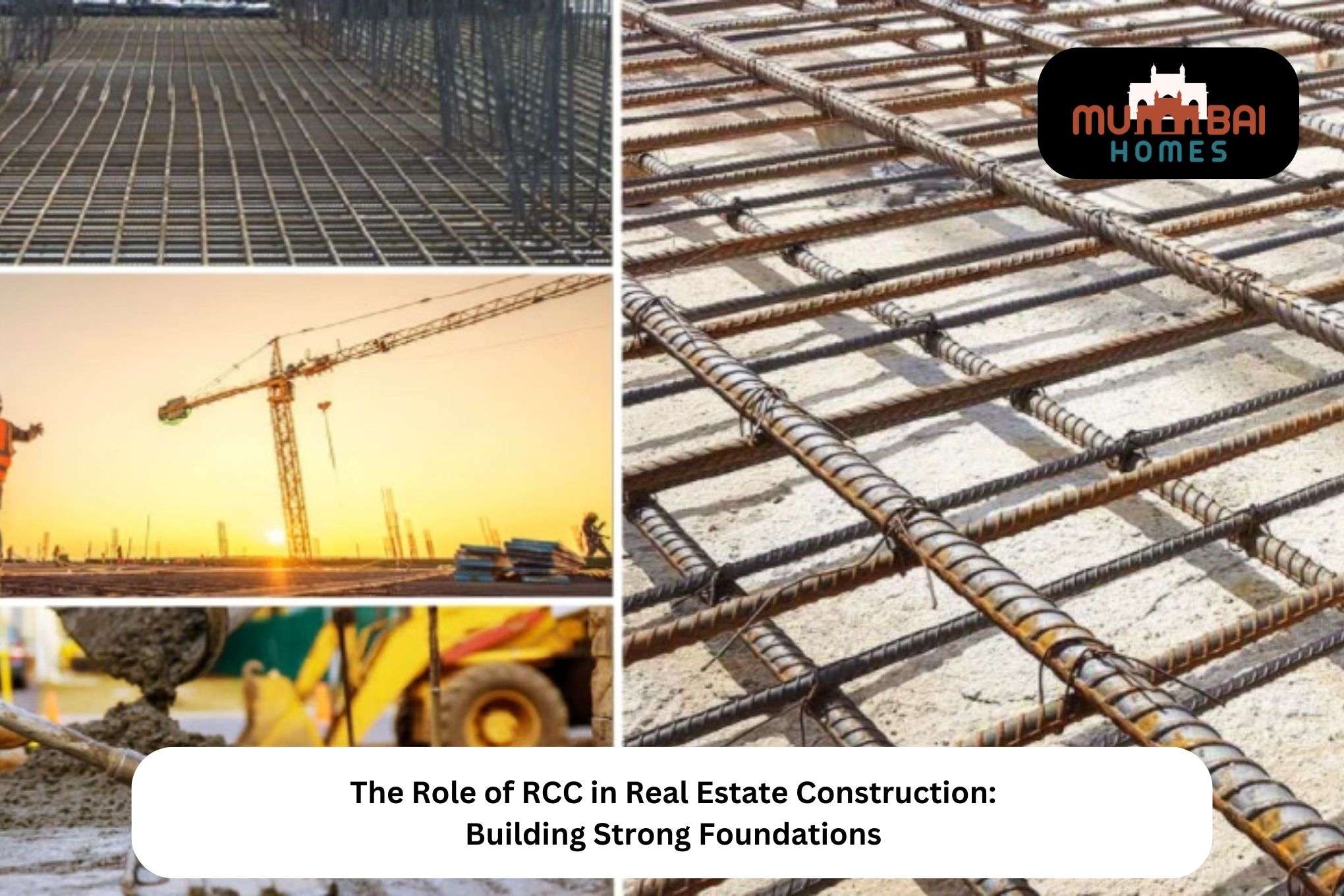Building Strong Foundations: Understanding the Importance of RCC in Real Estate Construction:
One of the main characteristics of the world of real estate construction is reinforced Concrete (RCC). RCC has been a foundation of modern construction for many years, providing remarkable strength, durability, and load-bearing potential to homes. While studying the importance of RCC we have to consider elements like in real estate projects, analyzing its advantages, resistance to fire, water, and corrosion, its role in earthquake-resistant designs, financial and sustainable aspects, and the method of blending, pouring, and curing RCC for construction.
Understanding the Importance of RCC in Real Estate Construction:
Understanding the Properties and Characteristics of RCC for Structural Integrity:
Reinforced Concrete is a composite material that combines concrete’s compressive strength and steel’s tensile strength, making it a choice for real estate construction. The combination of these substances gives more enhanced structural integrity, permitting RCC structures to withstand heavy loads, intense weather conditions, and the test of time.
Properties and Characteristics of RCC:
| Property | Description |
| High Compressive Strength | RCC exhibits exceptional resistance to compressive forces, preventing deformation. |
| Tensile Strength | Steel reinforcement enhances RCC’s tensile strength, preventing cracks and fractures. |
| Flexibility in Design | RCC can be molded into various shapes and sizes, allowing for innovative structures. |
| Longevity | Well-designed and maintained RCC structures can last for decades, reducing repairs. |
Analyzing the Advantages of Using RCC as a Construction Material in Real Estate Projects:
RCC gives numerous advantages in real estate construction, making it the material of preference for constructing strong and long-lasting structures.
Load-Bearing Capacity:
The incorporation of steel reinforcement extensively complements the load-bearing capacity of RCC structures. This allows for the construction of multi-story buildings and bridges, imparting balance and safety to occupants and users.
Fire Resistance:
RCC offers remarkable fire resistance because of its non-combustible nature. In the event of a fire, RCC structures maintain their structural integrity, presenting occupants with valuable time to evacuate thoroughly.
Water and Corrosion Resistance:
RCC is naturally proven against water and corrosion, reducing the risk of deterioration caused by environmental elements, such as moisture, humidity, and chemical exposure.
Analyzing the Role of RCC in Earthquake-Resistant Building Designs:
Earthquakes create large threats to structures, however, RCC performs a pivotal role in designing earthquake-resistant buildings.
Ductility and Energy Dissipation:
RCC structures possess a certain degree of ductility, letting them absorb and dissipate seismic energy during an earthquake. This prevents unexpected collapse and minimizes damage to the construction and its occupants.
Reinforcement for Earthquake Loads:
The steel reinforcement in the RCC structure acts as a safety net, redistributing earthquake-induced forces and stresses, thereby decreasing localized damage.
Highlighting the Economic and Sustainable Aspects of Using RCC in Real Estate Construction:
Beyond its structural advantages, RCC additionally gives economic and sustainable advantages in the realm of real estate construction.
Cost-Effectiveness:
RCC materials are simply available, making them cost-effective for construction projects. Additionally, their durability and reduced maintenance needs translate into long-term value financial savings.
Sustainable Construction:
RCC is taken into consideration as environmentally friendly, and can able to contain recycled substances like fly ash and slag, lowering the carbon footprint of construction projects.
Explaining the Process of Mixing, Pouring, and Curing RCC for Construction:
The proper execution of the mixing, pouring, and curing strategies is important for making sure the strength and durability of RCC structures.
Mixing:
The process involves the precise mixture of cement, aggregates, water, and admixtures to create a homogenous concrete mix. Proper mixing ensures uniformity and consistency.
Pouring:
During pouring, the freshly mixed concrete is carefully positioned into the formwork, which defines the shape of the structures. Care must be taken to avoid segregation and ensure a dense and void-free placement.
Curing:
Curing is a crucial step in RCC construction, regarding the maintenance of adequate moisture and temperature conditions to permit concrete to gain strength gradually. Proper curing enhances RCC’s long-term durability.
Conclusion:
Reinforced Concrete (RCC) remains an important factor in real estate construction because of its exquisite properties and characteristics. Its potential to provide strength, durability, and resistance to various environmental elements makes it the material of choice for building strong and reliable structures. By knowing the significance of RCC in construction and harnessing its ability, architects, engineers, and developers can create sustainable and resilient buildings that stand the test of time.
FAQ:
1. How does RCC enhance the load-bearing capability of structures?
ANS. RCC combines the compressive strength of concrete with the tensile strength of steel reinforcement, permitting it to withstand heavy loads without deformation.
2. Is RCC proof against fire and water?
ANS. Yes, RCC is non-combustible and naturally resistant to both fire and water, enhancing the safety and durability of structures.
3. How do contribute to earthquake-resistant building designs?
ANS. RCC’s ductility and the usage of steel reinforcement permit it to absorb and deplete seismic energy, reducing damage and ensuring occupant safety during earthquakes.




